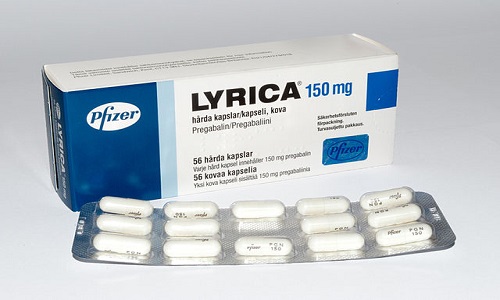Difference between Lyrica (Pregabalin) and Neurontin (Gabapentin)
Pregabalin and Gabapentin are selective inhibitors of voltage- gated calcium channels, which act to inhibit these pumps at specific alpha2-delta site and inhibit calcium mediated release of neurotransmitters from synaptic vesicles. The neurotransmitters that are inhibited are adrenaline and nor-adrenaline, which increases the sensitivity of neuropathic pain. Neuropathic pain is caused due to damage, necrosis or compression that affects the nerves in our body.
Release of neurotransmitters from adjacent nerves decreases the threshold of pain and causes allodynia ((perceiving pain from non painful stimuli) and hyperalgesia (excess pain from a pain stimuli). It has been suggested that both these drugs mediate interactions through descending noradrenergic and serotonergic pathways originating from the brain stem which modulates pain transmission in spinal cord.
Both these drugs are GABA agonists, potentiating the action of GABA, which is the inhibitory neurotransmitter. Although they have the same mechanism of action they differ widely in their pharmacokinetic and pharmacodynamic features which influence their efficacy and safety.
The types of neuropathic pain treated by these two classes are post herpetic neuralgia (neuropathic pain associated with herpes), diabetic neuropathy and prevention of secondary seizures. However gabapentin was primarily indicated for complex regional pain syndrome. Moreover neuromuscular pain like fibromyalgia has responded too, with these drugs. A detailed comparison is represented below:
| Features | Lyrica (Pregabalin) | Neurontin (Gabapentin) |
| Indication | Neuropathic pain (including post herpetic neuralgia and diabetic neuropathy) and Fibromyalgia | Neuropathic pain(including post herpetic neuralgia and diabetic neuropathy, Complex regional pain syndrome and Restless Leg Syndrome |
| Molecular Structure | Derivative of Gabapentin | Precursor to pregabalin |
| Mechanism of Action | inhibit voltage-gated calcium pumps at alpha2-delta site, inhibiting calcium mediated neurotransmitter release | inhibit voltage-gated calcium pumps at alpha2-delta site, inhibiting calcium mediated neurotransmitter release |
| Kinetics and Predictability of response | Oral administration exhibits non-saturable absorption in a linear manner and follows first order kinetics, which means plasma concentrations increase in proportionality to dose and responses are more predictable | Oral administration exhibits saturable absorption in a non linear manner and follows zero order kinetics, thus plasma concentrations does not increase in proportionality to dose and responses are less predictable |
| Oral absorption | Rapid within one hour | Slow and varies from 3 to 4 hours |
| Bioavailability | Absolute bioavailability is stable and > 90% irrespective of dosage | Drops from 60% to 33% when dose increases from 900 to 3600g/day |
| Binding to plasma protein | No | No |
| Excretion Route | Renal | Renal |
| Metabolism through cytP450 hepatic enzymes | No | No |
| Half life | More | Less |
| Elimination half life | 6 hours | 6 hours |
| Potency | More, since the dosage form is 75mg or 150 mg | Less, as the dosage form is minimum 300mg |
| Dosage Schedule | Once or Twice a day | Thrice or more to have a effective response |
| Efficacy | Extrapolating the dose to 450mg ( average dose of gabapentin) , reduction of neuropathic pain greater than Gabapentin. | Pain reduction is lesser with equivalent dose of pregabalin. |
| Antiepileptic action | more effective as it reduces frequency of seizures more than Gabapentin | Less effective |
| Side effects | Dry mouth, tremor and may include abnormal bleeding, bruising, and muscle pain | Includes side effects of pregabalin and additionally blurred vision, dizziness and headache |
| Withdrawal symptoms | Convulsions, seizures and suicidal thoughts | Same as Pregabalin |
| Dose dependant side effects | low | High |
| Safety in Clildren | Cannot Dry mouth, tremor and may include abnormal bleeding, bruising, and muscle pain | May be Dry mouth, tremor and may include abnormal bleeding, bruising, and muscle pain in combination with other drugs |
| Contraindications | Abnormal bleeding, low platelet count, kidney disorders, alcohol consumption, depression and suicidal tendency | Same as Pregabalin |
| Additional Improvements to pain relief | Sleep, mood elevation | Less than pregabalin |
| Effective dosing | 150mg per day in two divided doses | 1200 to 3600 mg per day in 3-4 divided doses depending upon severity |
| Categorization as per FDA schedule | Schedule V drug thus requiring lowest surveillance | Not a Schedule V drug , hence requiring certain surveillance |
- Difference Between “Heart attack” and “Cardiac arrest” - June 24, 2016
- Difference Between Connective Tissue and Epithelial Tissue - June 22, 2016
- Difference Between Migraine And Stroke - January 11, 2016
Search DifferenceBetween.net :
Leave a Response
References :
[0]https://en.wikipedia.org/wiki/Pregabalin

